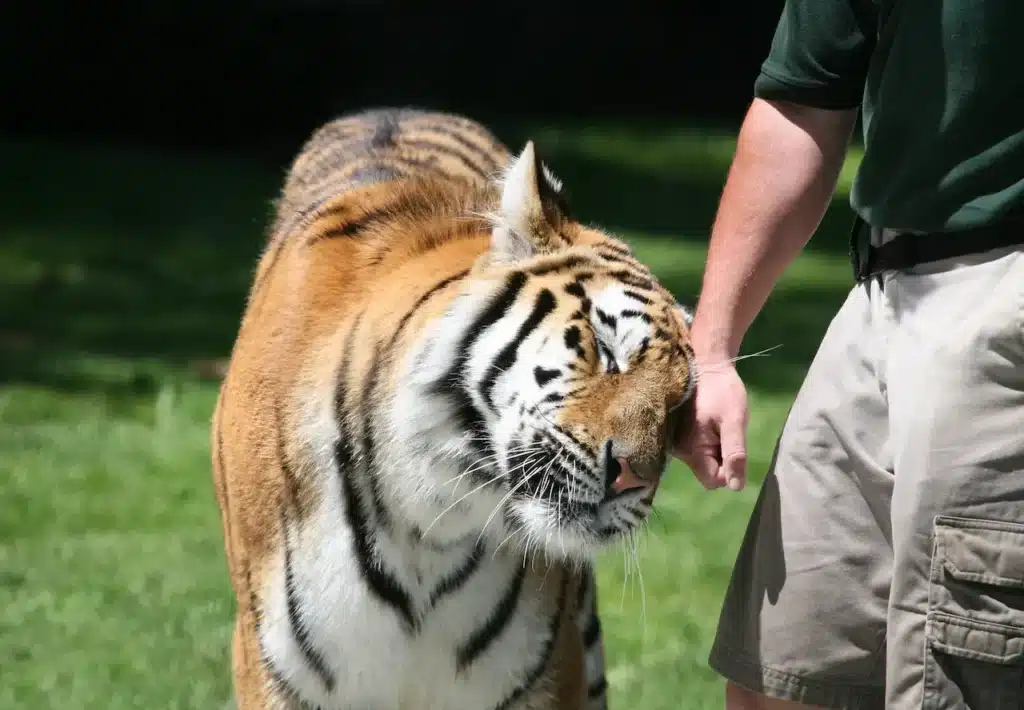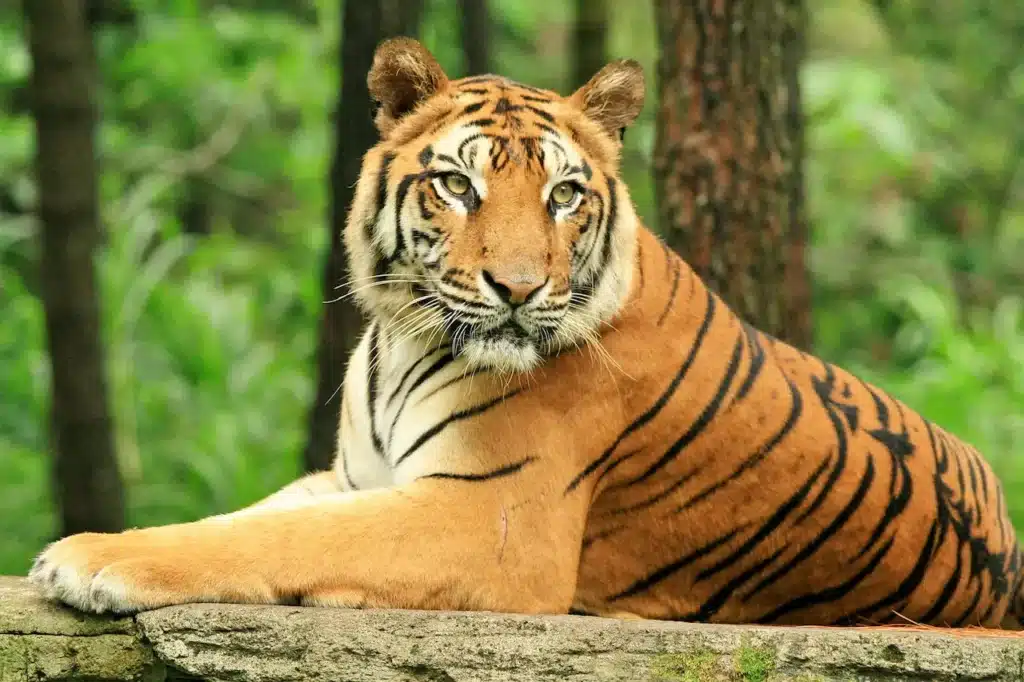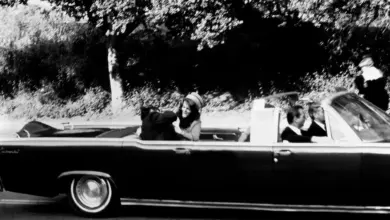In the heart of South Africa where the savannas are endless and the sun burns the soil with a golden resolve, a man lives whose name is synonymous with wild adventures, unrelenting passion, and controversial conservation. John Varty. He’s also known as Tiger Man of Africa.
A Wild Beginning: From Hunter to Protector
John Varty has lived a life deeply rooted in the rhythms of the wilderness. Born into a South African family that owned a game farm near the iconic Kruger National Park, Varty’s early years were shaped by the raw beauty and untamed nature of the African bush. Like many boys raised in the bushveld, John was taught to hunt from a young age. It was, at the time, considered a rite of passage a way to connect with nature and prove one’s place within it.

But fate, as it often does, had different plans.
In 1973, the sudden death of John’s father, Charles Varty, marked a turning point in the family’s legacy. Faced with a future they hadn’t anticipated, John and his brother Dave made a bold and transformative decision–they renounced hunting entirely and chose instead to dedicate their lives to conservation. Rather than pursuing animals with rifles, they would now protect them with cameras and compassion.
The family game farm was reborn as a wildlife sanctuary, a refuge for the animals they once hunted. They named it Londolozi, a powerful Zulu word meaning “Protector.” It was more than just a name; it was a mission statement.
Under the stewardship of the Varty brothers, Londolozi evolved into something extraordinary. It became a model for conservation tourism, where wildlife and human presence could coexist harmoniously. Over time, it gained international acclaim, appearing multiple times on Travel + Leisure’s prestigious list of the World’s Best Safari Lodges.
But for John Varty, Londolozi was just the beginning. While many would have been content with building one of the most renowned wildlife reserves in the world, Varty’s vision stretched far beyond the boundaries of the African bush. The wilderness had called him once–and now, it would lead him into uncharted territory, toward some of the boldest and most controversial conservation efforts of his time.
From the plains of South Africa to the jungles of India and beyond, John Varty’s story would continue to unfold–not as a hunter, but as a filmmaker, storyteller, and unconventional guardian of the wild.
Wildlife, Lights and Camera
John Varty is a legendary wildlife film-maker. His work is as legendary and beautiful as the wild places he films. Varty, who has made over 30 documentaries and one feature film, has dedicated himself to capturing the beauty of nature.
The Orphaned Leopard and Shingalana are among his best-known documentaries. The American Cable TV Award went to Swift and Silent in 1991, and The Silent Hunter was awarded The New York Gold Award. Varty brought his story to the screen in 1992 with Running Wild. The film, which featured Brooke Shields and showcased the dangers of bush life, was a big hit.
Varty’s commitment to wildlife storytelling was further demonstrated by his role in The Leopard Queen. The project spanned over 17 years.
Tigers in Africa: A Controversial Vision
Varty began his most controversial and audacious chapter in 2000 when he started the Bengal Tiger Rewilding Project in South Africa’s Free State Province, near Philippolis. What is the mission? The mission?
The project began in Tiger Canyons with captive-bred animals and soon gained international attention. Documentaries such as Tigers (2003) and Tiger Man of Africa (2011), National Geographic, chronicled this bold experiment.
Not all attention is positive.
Scrutiny & Setbacks
The Tiger Re-wilding Project quickly became the centre of controversy. Critics raised red flags, including former partners and conservationists. There were allegations that filmmakers manipulated scenes by driving prey in the path of tigers for dramatic footage. Other people accused the project’s financial mismanagement. A financial audit revealed that funds had been misappropriated, leading to a split within the group between Varty, his collaborators, Quan, and Bray. They then founded Save China’s Tigers and Laohu Valley Reserve.
Adding fuel to the fire, genetic studies revealed that the tigers at Tiger Canyons were not purebred–diminishing the conservation value of the initiative in the eyes of the scientific community.
Then tragedy struck. Varty suffered serious injuries after being attacked by his tigers on March 29 2012. He spent nearly a whole month in hospital. Even though it was a life-threatening experience, Varty did not let that stop him. He continued to live, work, and film at Tiger Canyons.
Varty shot the footage for the “Tiger in Africa” commercial, which was released in 2014. The video immortalised the surreal image of Bengal tigers stalking the African plains.
By 2019, Tiger Canyons had 18 Bengal tigers, a testament to a man’s persistence who refused to let nature define what is possible.

Legacy of the Tiger Man
John Varty is nothing if not a paradox: a hunter-turned-conservationist, a filmmaker-turned-subject, a visionary to some and a villain to others. His life is a story of incredible ambition, which has been both praised and criticised.
John Varty’s claw marks on Africa’s wild history are indelible, regardless of whether the Tiger Canyons Project is ultimately seen as a misstep by scientists or a visionary project for species preservation.
The Tiger Man of Africa remains one of the most compelling figures in modern wildlife conservation relentless, daring, and unafraid to walk the fine line between man and beast.




